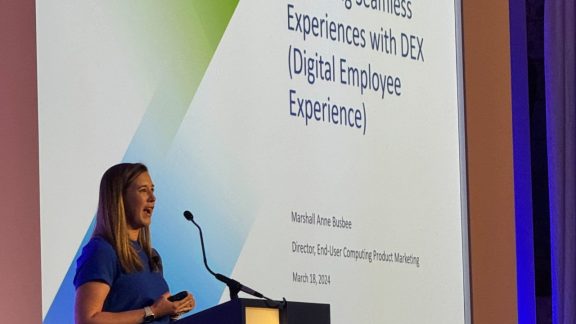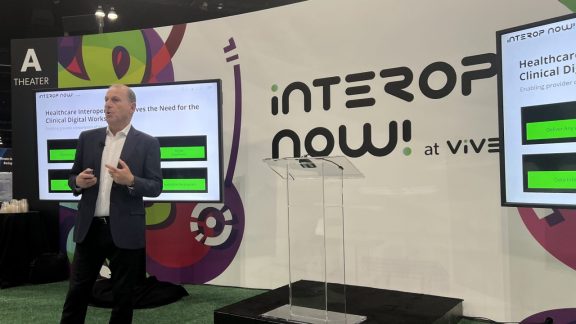By Narasimha Krishnakumar, Staff Product Manager, VMware
It is a pleasure to announce View Composer API for Array Integration (VCAI) with the new version of VMware View, View 5.1.
Offered in VMware View 5.1 as a Tech Preview, VCAI leverages the native cloning abilities in the storage array to offload storage operations within a VMware View environment. As a result, VCAI improves provisioning speeds and management in View Composer and offers another solution for customers wanting to leverage other storage options.
In addition to the View Storage Accelerator feature, VCAI enables customers who have NAS storage arrays to use Array Native Clones in View deployments.
This blog provides an overview of the feature in a Q&A format.
Q. What is VCAI?
A. VCAI or View Composer API for Array Integration is a new “Tech Preview” feature of View 5.1 that leverages capabilities of VMware vSphere as well as some of the NAS storage arrays that have the VAAI (vSphere API for Array Integration) NAS native snapshot capability. This feature allows customers to offload the creation of linked clones to the storage array. It is used in conjunction with linked clone desktop pools and NFS datastores that are exported by NAS storage arrays such as NetApp and EMC.
Q. Is VCAI a fully supported feature of VMware View 5.1?
VCAI is a “Tech Preview” (Experimental) feature of View 5.1. It is not a supported feature of View 5.1. Customers who have all the required components can try and test it in their environment.
Q. What are the different components required to operationalize View Composer API for Array Integration?
The following components are required for operationalizing the use of VCAI:
- VMware View 5.1
- VMware vSphere 5.0 or later
- NAS storage array that supports VAAI – The array needs to be certified for VAAI NAS primitives. Please consult your storage array vendor documentation on whether the storage hardware model and storage software version support the VAAI NAS native snapshot capability.
- NAS storage array vendor software plug-in on each vSphere server in the View Cluster.
Q. What is the plan for supporting VCAI?
Currently the View team is working on establishing a certification program for the NAS storage partners to support the View use case. This program will be used to test and validate the VCAI feature with the storage partner plug-ins and storage arrays. VMware intends to support the feature when at least one partner has been certified. The timeline for the program is a work in progress and VMware is actively working with various internal groups and partners to establish and operationalize the program.
Q. How can I evaluate/use VCAI?
VMware View 5.1 exposes the VCAI feature at pool creation time as well as when users want to edit the pool. As shown below in Figure 1. , Desktop administrators can choose to use this feature by selecting the “Use native NFS snapshots (VAAI)” checkbox. Once this feature is selected, the pool creation process will offload the clone creation task to the storage array by using the VAAI NAS native NFS snapshot primitive. Figure 2 below shows the View Administrator UI for enabling the feature with the edit pool operation.
Figure 1 . View Administrator UI screen for configuring View Composer API for Array Integration (Create Pool Operation)
Figure 2 . View Administrator UI screen for configuring View Composer API for Array Integration (Edit Pool Operation)
Q. Can I use VCAI with both Manual Pools and Automated Pools?
The feature works only with Automated pools and linked clone type desktop images.
Q. What are the benefits of using VCAI?
One can realize many benefits by using View Storage Accelerator. Some of these benefits include:
- Reduced desktop provisioning times – Using this feature helps customers reduce the time taken to provision desktops. When a linked clone pool is created, the cloning operation is offloaded to the storage array (through the storage vendor plugin on the vSphere server). NAS Storage arrays, which are optimized to handle storage array operations such as snapshot creation, clone creation etc., can create these native clones relatively easily and quickly. This cuts down the linked clone pool provisioning time when compared to creating the pools without this feature.
- Efficient use of resources – Using this feature enables efficient use of resources. First, since the clone creation operation is offloaded to the storage array, the load on the CPU of the vSphere servers is reduced. Secondly, the storage array’s CPU is leveraged to create the clones, and the additional bandwidth available on the vSphere server can be used to carry out other operations that result in overall improvement of customer experience. Finally, the native cloning operation reduces network bandwidth consumption as fewer packets are transmitted over the network.
Q. Can you provide some information on the internal workings of VCAI?
Until the introduction of the VCAI, customers using NAS arrays for their View deployments could setup their environment in 2 ways:
- Automated pool of linked clone desktops which offer storage capacity savings
- Manual pool of full clones with capacity savings achieved by using native features (ex: deduplication, native storage clones/snapshots etc.,) of the NAS Storage array
With the VCAI, customers can now leverage both the linked clone capability that View provides and the capabilities provided by the NAS storage array.
The workflow of using this feature is as follows:
- Desktop administrator kicks off a create pool operation by selecting a linked clone type pool and an NFS datastore as the storage target for the pool – If the NAS storage array hosting the NFS datastore is VAAI NAS capable, the advanced storage option will enable the use of View Composer API for array integration and the administrator can select this option. If the NAS storage array is not VAAI NAS capable, this feature is automatically disabled.
- Once the feature is selected, the linked clone pool creation process begins with an offload of the cloning operation to the storage array. The offload is accomplished through a sequence of steps that results in calling the VAAI NAS native snapshot primitive within the ESXi server. Each ESXi server in the View cluster has a NAS array plugin that traps the VAAI call and offloads it to the storage array.
- The storage array creates the clones internally and returns back to the user
- The pool creation operation completes after the clones are created on the storage array.
The feature is also supported on existing pools. The typical use case is one of View upgrades – Customers running VMware View 5.0 on VMware vSphere 5.0 upgrading to VMware View 5.1 can use this feature on their existing linked clone pools. The edit pool wizard allows selection of this feature. It is important to note that a recompose/refresh operation must be performed on the pool when this feature is selected through the edit pool wizard. Without a refresh/recompose operation, the clones are still maintained as redo-log based clones and not native storage clones. The workflow for the clone creation with the edit pool case is same as the one described above
Q. Are there any special considerations to keep in mind when using this feature?
It is important to note that the VCAI is a “Tech Preview” in VMware View 5.1 – VMware does not officially support it. Users need to keep the following considerations in mind when planning to experiment this feature:
- VCAI cannot be selected if View Replica tiering is selected – The replica of the base image vm as well as the clone must reside on the same datastore for this feature to work.
- VCAI can be turned off at any time. However, it should be noted that when the feature is turned off, the pool is unchanged from its current configuration. Users must initiate a refresh/recompose operation for the changes to take effect.
- The feature is fully feature compatible with other features and supports the fast refresh operation that is available with the redo-log based clones.
- There are some restrictions of using this feature with local mode implementations. Please consult your documentation before using the feature on local mode enabled linked clone pools
Read more about the other products launched as part of our VMware End-User Computing portfolio announcement and register for the VMware End-User Computing Virtual Conference on May 3rd, 8:30am to hear more.







